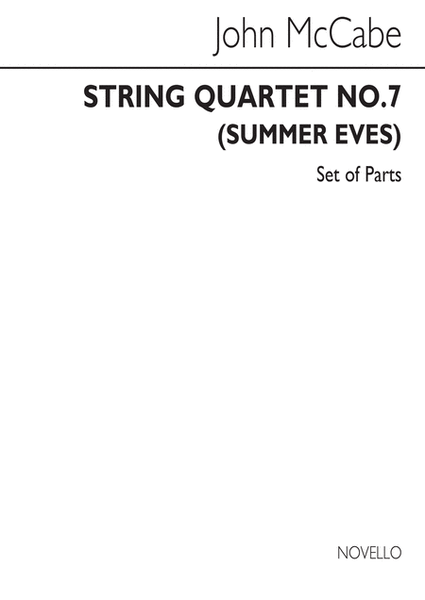String Quartet No.7 - Summer Eves (Parts)
Details
Description
SKU: BT.MUSNOV162327-01
Composed by John McCabe. Classical. Book Only. Novello & Co Ltd. #MUSNOV162327-01. Published by Novello & Co Ltd. (BT.MUSNOV162327-01).Commissioned by the Presteigne Festival of Music and the Arts Limited, with funds provided by the Arts Council of Wales, for premiere in August 2012 by the Carducci String Quartet in St. Andrew's Church,Presteigne.
Composer's Note.
'Some years ago I noted down the opening theme of what I anticipated would be a relatively Classical string quartet "Classical" in the sense of the forms adopted,plus perhaps a predominantly lyrical tone of voice. The commission for this work, from the Presteigne Festival for their 30th anniversary in 2012, gave me the opportunity of putting into practice this long-held idea. Itisdedicated to the Festival and to the Carducci Quartet, whose career, as much-admired friends and colleagues, I have greatly enjoyed.
The only break with "classical" tradition is that there are five movements instead offour, with two Scherzi as the second and third, though both these are very short and contrasting. I found myself listening to Haydn's string quartets a lot before and during the composition of this work, and I hope the spirit ofhis delight in writing for this medium is echoed in my own music. The opening movement is in sonata form, unusually for me, and lyricism is, I hope, the basis of it, though there is a good deal of activity at times. The Scherzo,light and marked by frequently-changing rhythms, is followed by an equally short but ferocious Perpetuum mobile, marked Wild und rasch (one of my favourite German tempo markings). The fourth movement is an intense Adagio, in whicha single phrase uttered strongly in unison is gradually transformed into gentle diatonic chords before the close, intermingled with cadenzas for cello, for viola, and for the two violins together. The finale (a Rondo) resumes theclassical tone of the first movement, but apart from one dance-like episode it builds up a fair head of steam towards a final Presto, which however ascends, slows and quietens, towards a gentle summer sky at dusk.'

 Share
Share